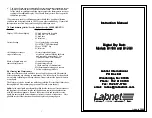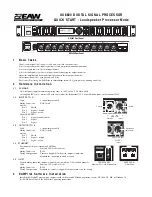Reviews:
No comments
Related manuals for Allen-Bradley PowerFlex 755T Flux Vector Tuning

UCR
Brand: Olympus Pages: 86

D1200
Brand: Labnet Pages: 2

CentriMag
Brand: Abbott Pages: 2

FreeStyle Libre
Brand: Abbott Pages: 3

PHASER
Brand: abc Pages: 8

SkyVUE 8M
Brand: Campbell Pages: 2

ECL Comfort 210
Brand: Danfoss Pages: 28

BIG FOOT
Brand: T-Rex Pages: 13

UX8800
Brand: EAW Pages: 2

907
Brand: abc Pages: 28

DPO6000 Series
Brand: Hantek Pages: 124

HO720
Brand: Hameg Pages: 10

PC16
Brand: NARGESA Pages: 37

NOA60
Brand: NARGESA Pages: 6

5000 SERIES
Brand: Yetter Pages: 24

5000 SERIES
Brand: Yetter Pages: 32

VLR100 LED Series
Brand: WE-EF Pages: 3

ARIEDO HDC 300W
Brand: GSi Pages: 28

















